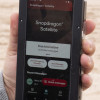State of Emergency
The FCC devised a three-part plan for carriers to implement.
The first part was so simple and obvious, it was never talked about much. Carriers were given a year to forward all 911 calls made from cell phones to a local Public Service Answering Point (PSAP), the emergency call centers that cover the country. Like landline services, carriers had to forward emergency calls from any registered handset immediately, regardless of account status.
The second part, referred to as Phase I, required that carriers pass along the caller ID of the emergency caller to the PSAPs as well as the location of the network's tower relaying the call. Relaying this location was intended to assure that the emergency call was passed on to the appropriate PSAP, not necessarily to aid in finding the caller. This was supposed to be ready at the end of 1997, a year and a half from the start date at the latest.
Phase II required carriers to implement systems that allowed them to locate a caller with 125 meter accuracy 67% of the time, and to pass that location on to the appropriate PSAP if that answering point is capable of receiving the location information. Because Phase II would require new technology, carriers were given 5 years, until 2001, to test and build out the new network.


 iPhone 14 Plus Offers a Big Screen For Less
iPhone 14 Plus Offers a Big Screen For Less
 Qualcomm Taps Iridium for Satellite Connectivity
Qualcomm Taps Iridium for Satellite Connectivity
 Apple Watch Goes Ultra
Apple Watch Goes Ultra
 Bullitt Announces First Phones with Satellite Messaging
Bullitt Announces First Phones with Satellite Messaging

